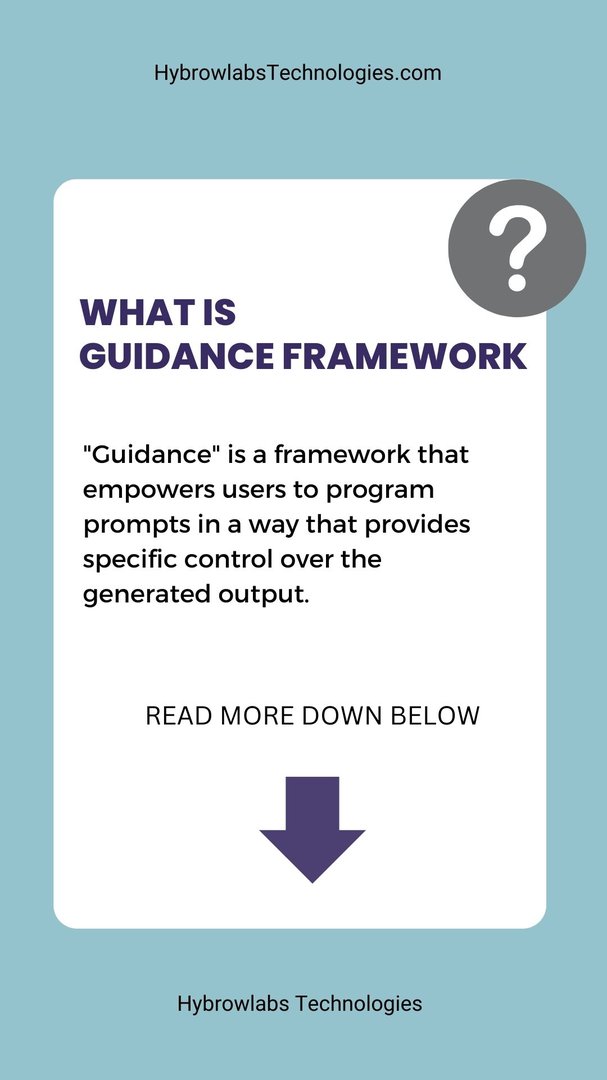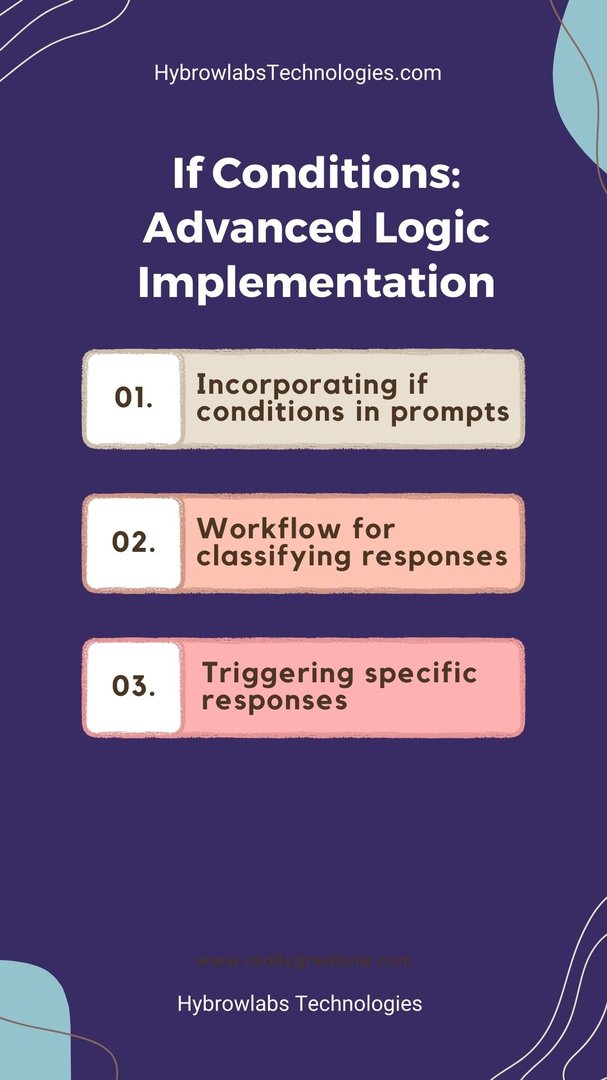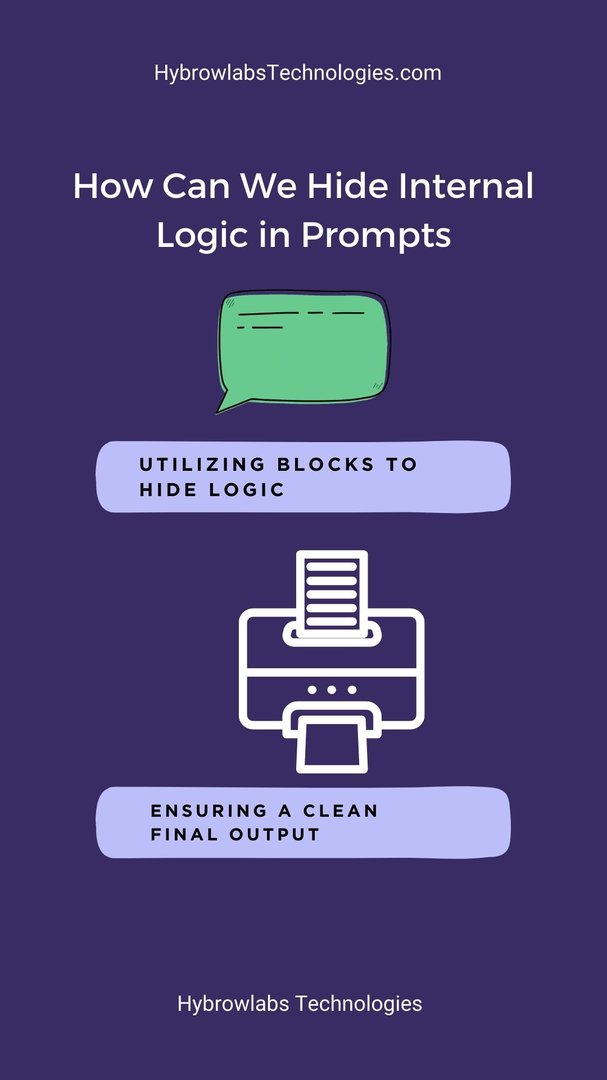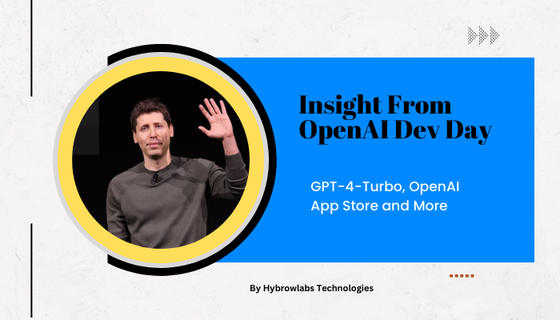When it comes to harnessing the power of AI language models like GPT-3, getting the right prompt is often the key to unlocking the desired output. Whether you're using AI for content generation, data analysis, or customer support, crafting effective prompts can be a daunting task. The challenge lies in not only getting the prompt right but also in ensuring consistent and scalable results. This is where advanced prompting techniques come into play, offering the promise of more control and precision in shaping AI-generated content. If you are searching about how AI can enhance user experience make sure to check our blog on Applications of GPT-3 in enhancing user experience.
The Power of Control: Introducing "Guidance"

Overview of the "Guidance" Framework
One of the most exciting developments in the world of advanced prompting is the "Guidance" framework. This open-source framework, initially introduced by Microsoft, has gained significant popularity on GitHub with over 12,000 stars. But what exactly is "Guidance," and why is it gaining traction among developers and AI enthusiasts?
"Guidance" is a framework that empowers users to program prompts in a way that provides specific control over the generated output. It allows you to define the structure of the final output, making it easier to get precisely the format you desire. With "Guidance," you can also construct prompts using features like for-each loops, candidate answer lists, and even if-conditions, offering unparalleled flexibility and customization.
Open Source and Popularity on GitHub
The open-source nature of "Guidance" means that developers worldwide can contribute to its development and improvement. Its popularity on GitHub demonstrates the community's recognition of its potential to solve the prompt control challenge.
- Enabling Specific Output Structures
With "Guidance," you have the power to create prompt templates that define the structure of your desired output. These templates incorporate variables and special terms, guiding the large language model in generating content that adheres to your predefined format. This level of specificity can be a game-changer, particularly when consistency in output is critical.
- Using Visual Studio Code and Jupyter Notebook
Getting started with "Guidance" is accessible to developers using tools like Visual Studio Code and Jupyter Notebook. These familiar environments provide a comfortable space to work with the framework and experiment with various prompts.
- Configuring Prompts for Output Control
One of the standout features of "Guidance" is its ability to configure prompts to exert precise control over the output. Whether you need structured text, data analysis results, or customized responses for customer support, "Guidance" enables you to tailor your prompts to meet your exact requirements.
Structuring Output with "Guidance"
A. Creating Prompt Templates
What is a Prompt Template?
A prompt template is a foundational aspect of the "Guidance" framework. It serves as a blueprint for instructing AI models on how to generate specific output.
Defining Variables and Special Terms
Within a prompt template, you can define variables and special terms enclosed in double curly brackets, like {{variable}} and {{special_term}}.
These variables and terms guide the AI model to produce the desired content.
Examples of Specific Output Structures
Let's consider an example: "When Steve Jobs said without guidance AI would do more harm than good."
By defining variables within curly brackets, you can structure the output like this:
"When Steve Jobs said {{special_term}}, AI would do more harm than good."
This allows for precise control over output structures.
B. Combining Multiple Outputs
Why Combine Multiple Outputs?
Sometimes, you may need AI to generate multiple distinct responses. "Guidance" enables you to do this efficiently within a single prompt.
Illustrating Multiple Outputs
Suppose you want AI to provide both an argument and a counter-argument.
You can define both within the same "Guidance" prompt, resulting in two distinct responses.
Restricting Output with Predefined Options
- Managing Predefined Answer Lists
- Creating a List of Predefined Answers
In scenarios where you want to limit AI to specific responses, you can create predefined answer lists.
Guiding the Model with Predefined Options
You can instruct the AI model to select an answer from the predefined list rather than generating one autonomously.
Examples of Controlling Output with Predefined Options
- An Example: Gauging Rudeness
- Let's say you're handling customer inquiries. You want the AI to determine if a response is rude or not.
- You define a list of predefined answers: ["Yes, it's rude.", "No, it's polite."].
- You then ask the AI, "Is the following sentence offensive?" and provide a sentence.
- The AI will choose an answer from the predefined list based on its analysis.
Real-World Applications in Customer Responses
- This control mechanism is particularly useful in customer service, where you need specific, standardized responses.
- You can ensure consistent communication while benefiting from the AI's reasoning capabilities.
- Advanced prompting with "Guidance" empowers you to structure AI-generated content precisely and restrict outputs as needed, making it a valuable tool for various applications, especially in content generation and customer interactions.
C. Advanced Logic: Implementing If Conditions

Incorporating if conditions in prompts
If conditions are powerful programming constructs that allow decision-making within prompts. They enable prompts to respond differently based on specific criteria, enhancing the flexibility of AI-generated content.
Workflow for classifying user responses
- To implement if conditions, begin by classifying user responses.
- Create a framework for determining whether a response meets certain criteria, such as being "rude" or "not rude."
Triggering specific responses based on conditions
- Once user responses are classified, prompts can be designed to trigger specific actions or responses based on the classification.
- For example, if a response is categorized as "rude," the AI may be prompted to provide a polite response.
Practical applications in response generation
Implementing if conditions is valuable in various real-world applications:
- Customer Service: Responding differently to polite and rude inquiries.
- Content Moderation: Flagging and handling inappropriate content.
- Automated Assistance: Providing tailored responses based on user intent.
D. Hiding Internal Logic

Utilizing blocks to hide logic
- To maintain a clean and concise output, it's essential to hide the internal logic of prompts.
- Blocks are a useful tool for encapsulating and concealing complex logic within a prompt.
Ensuring a clean final output
- Hiding internal logic ensures that the end result is user-friendly and devoid of unnecessary technical details.
- Users only see the polished, generated content, enhancing readability and usability.
Examples of hiding internal logic
- Conditional Prompts: By concealing the if conditions and logic behind them, the output appears straightforward to users.
- Data Processing: Complex data processing steps can be hidden to present a simplified result.
E. Advanced Use Cases
Generating emails with precise language
- Advanced prompts enable the generation of emails with precise and tailored language.
- AI can craft emails that align with best practices and specific communication goals.
Implementing priority-based responses
- Prioritizing responses based on predefined criteria is achievable with advanced prompts.
- For instance, important clients might trigger immediate actions, while standard queries receive standard responses.
Real-time chart generation with Quick Chart
- Advanced prompts can interact with external services like Quick Chart to generate real-time visual content.
- Natural language queries can be transformed into data structures and used to create charts dynamically.
Customizing responses with real-time images from Pollination
AI can seamlessly integrate with services like Pollination to generate real-time images. It's possible to craft responses that include custom illustrations or visuals that correspond to user queries.
F. Community and Open Source Resources
Exploring Flow GPT for prompt inspiration
Flow GPT is a valuable resource for finding prompt inspiration. It offers a wide range of collections from various domains, aiding in the creation of effective prompts.
Leveraging the Flow GPT community
The Flow GPT community provides insights and ideas for prompt engineering. Collaborating with the community can lead to innovative and effective prompting techniques.
GPT Prompt Engineer: An evaluation framework
- GPT Prompt Engineer is a framework for generating and evaluating prompts.
- It uses GPT models to create and assess prompt variations for improved performance.
The value of prompt evaluation and scoring
- Prompt evaluation is crucial for refining and optimizing prompts.
- Evaluation tools like GPT Prompt Engineer can help identify the most effective prompts for specific tasks.
Conclusion
Advanced prompting techniques, including if conditions, hidden logic, and integration with external services, empower AI to deliver highly customized and context-aware responses. Community resources and evaluation frameworks play a significant role in enhancing the efficiency and effectiveness of prompts. As AI continues to evolve, experimenting with advanced prompts and staying engaged with the AI community will be key to unlocking new possibilities in automated content generation. For more information related to AI, visit hybrowlabs official website and check our other blogs on prompting.
FAQ
FAQ 1: What is the "Guidance" framework, and how does it differ from traditional prompting methods?
Answer: The "Guidance" framework is an advanced open-source toolkit that allows you to have precise control over the output generated by AI models. Unlike traditional prompts that rely on simple input text, "Guidance" empowers you to define specific output structures, use variables, and even implement conditional logic in your prompts, enabling more tailored and consistent results.
FAQ 2: Can I use the "Guidance" framework with different AI models, or is it limited to a specific one?
Answer: "Guidance" offers flexibility in model selection. While it can be used with models like DaVinci, GPT-3.5, GP4, and even open-source models like LLM, it may require specific syntax adjustments for each model. However, the framework's principles of output control and structure remain consistent across various models.
FAQ 3: How can "Guidance" be applied in real-world scenarios, such as customer responses or email generation?
Answer: "Guidance" is incredibly versatile. In customer responses, it can help maintain a consistent tone and language while allowing for dynamic content. For email generation, you can use it to craft messages with predefined language, ensuring professional and brand-aligned communication. "Guidance" adds a layer of customization to AI-generated content for practical applications.
FAQ 4: Is "Guidance" suitable for data-related tasks like chart generation and image creation?
Answer: Absolutely. "Guidance" can be used to generate real-time charts with services like Quick Chart by turning natural language queries into dynamic visualizations. It can also be employed to create responses with real-time images from services like Pollination. This makes it a valuable tool for data visualization and creative content generation.
FAQ 5: Is there a learning curve to using "Guidance," and are there any resources available for further guidance?
Answer: While "Guidance" offers powerful capabilities, there is a learning curve involved in mastering it. However, the community-driven nature of the framework means there are resources available to help you get started. Online communities and open-source projects like Flow GPT and GPT Prompt Engineer can provide inspiration, examples, and evaluation frameworks to facilitate your journey into advanced prompting with "Guidance."



.jpg)


a3dc85.jpg)
.jpg)
fd8f11.png)


.jpg)
.jpg)